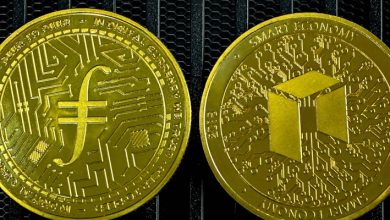Understanding Tokenomics: Supply and Demand

- Introduction to Tokenomics
- Exploring the Basics of Supply and Demand
- The Role of Tokenomics in the Cryptocurrency Market
- Analyzing the Impact of Supply and Demand on Token Prices
- Strategies for Managing Tokenomics in a Volatile Market
- Future Trends in Tokenomics: What to Expect
Introduction to Tokenomics
Tokenomics is a term that refers to the economics of a token. It encompasses various aspects such as the token’s supply, demand, distribution, and utility within a particular ecosystem. Understanding tokenomics is crucial for investors and users alike, as it can provide insights into the potential value and growth of a token.
One of the key components of tokenomics is the token’s supply. The supply of a token refers to the total number of tokens that are available in circulation. This can have a significant impact on the token’s value, as a limited supply can create scarcity and drive up demand. On the other hand, an excessive supply can lead to inflation and devalue the token.
Another important aspect of tokenomics is the token’s demand. Demand refers to the desire for a token, which can be driven by factors such as its utility, scarcity, and market sentiment. High demand for a token can drive up its price, while low demand can lead to a decrease in value. Understanding the factors that influence demand is essential for predicting the future performance of a token.
In conclusion, tokenomics plays a crucial role in the success of a token. By analyzing the supply and demand dynamics of a token, investors and users can make informed decisions about buying, selling, or holding onto a token. It is essential to consider tokenomics as part of a comprehensive investment strategy in the ever-evolving world of cryptocurrencies.
Exploring the Basics of Supply and Demand
Supply and demand are fundamental concepts in economics that play a crucial role in determining the value of tokens in a token economy. Understanding how supply and demand interact can provide valuable insights into the dynamics of tokenomics.
**Supply** refers to the quantity of tokens available in the market at a given time. The supply of tokens can be influenced by factors such as mining rewards, token creation mechanisms, and token burning. When the supply of tokens increases, it can lead to a decrease in token value due to oversaturation in the market.
**Demand**, on the other hand, represents the desire of individuals to acquire tokens at a certain price. Factors such as utility, scarcity, and market sentiment can influence the demand for tokens. An increase in demand can drive up token prices, while a decrease in demand can lead to a decline in token value.
The interaction between supply and demand is what ultimately determines the price of tokens in a token economy. When the demand for tokens exceeds the available supply, prices tend to rise. Conversely, when the supply of tokens outstrips demand, prices are likely to fall.
Tokenomics is the study of how these supply and demand dynamics impact the value of tokens within a blockchain ecosystem. By analyzing the forces of supply and demand, tokenomics seeks to provide a deeper understanding of the economic principles that govern token economies.
In conclusion, supply and demand are essential concepts to grasp when delving into the world of tokenomics. By understanding how these forces interact, individuals can gain valuable insights into the factors that drive token value and shape the dynamics of token economies.
The Role of Tokenomics in the Cryptocurrency Market
Tokenomics plays a crucial role in the cryptocurrency market, influencing the supply and demand dynamics of digital assets. Understanding tokenomics is essential for investors and traders to make informed decisions in this volatile market.
**Token Supply:** The token supply of a cryptocurrency refers to the total number of tokens that exist or will ever exist. This supply can vary depending on the tokenomics of the project. Some cryptocurrencies have a fixed supply, meaning there is a limited number of tokens that will ever be created. Others have a dynamic supply that can change based on certain conditions.
**Token Demand:** Token demand is driven by various factors, including the utility of the token, market speculation, and overall market sentiment. The demand for a token can impact its price and market value. As more investors and users demand a particular token, its value may increase. Conversely, if demand decreases, the token’s value may decline.
**Token Utility:** The utility of a token refers to its functionality within a specific ecosystem. Tokens can serve various purposes, such as providing access to a platform, facilitating transactions, or representing voting rights. The utility of a token can influence its demand and value in the market.
**Token Distribution:** Token distribution is another critical aspect of tokenomics. How tokens are distributed among investors, developers, and other stakeholders can impact the token’s value and market performance. A fair and transparent token distribution process is essential for building trust and credibility within the cryptocurrency community.
In conclusion, tokenomics plays a vital role in shaping the cryptocurrency market. By understanding the supply and demand dynamics of tokens, investors can make more informed decisions and navigate the complexities of this evolving market landscape.
Analyzing the Impact of Supply and Demand on Token Prices
When it comes to understanding tokenomics, it is crucial to analyze the impact of supply and demand on token prices. Supply and demand dynamics play a significant role in determining the value of a token in the market. Let’s delve deeper into how supply and demand affect token prices:
- Supply: The total supply of a token in circulation can have a direct impact on its price. If the supply of a token is limited, it can create scarcity, driving up demand and consequently increasing the price. On the other hand, if the supply is abundant, it can lead to oversaturation in the market, causing the price to decrease.
- Demand: The demand for a token is influenced by various factors such as utility, adoption, and market sentiment. A high demand for a token can drive up its price, as more investors are willing to buy it at a higher price. Conversely, a low demand can result in a decrease in price as sellers may need to lower their prices to attract buyers.
- Market Forces: The interplay between supply and demand creates market forces that determine the price of a token. These market forces can be influenced by external factors such as regulatory changes, technological advancements, and macroeconomic trends. It is essential for investors to monitor these market forces to make informed decisions about buying or selling tokens.
Overall, understanding the relationship between supply and demand is crucial for predicting token price movements and making sound investment decisions in the crypto market. By analyzing supply and demand dynamics, investors can gain valuable insights into the factors driving token prices and position themselves strategically in the market.
Strategies for Managing Tokenomics in a Volatile Market
In a volatile market, it is crucial to have **strategies** in place to effectively manage **tokenomics**. One **strategy** is to diversify your **portfolio** by investing in a variety of **tokens**. This can help spread risk and minimize potential losses. Additionally, staying informed about market trends and news can help you make **informed** decisions about when to buy or sell **tokens**.
Another **strategy** is to set clear **goals** and **limits** for your **investments**. By establishing **targets** for **profits** and **losses**, you can avoid making **emotional** decisions based on market **fluctuations**. It is also important to regularly review and adjust your **strategies** as needed to adapt to changing market conditions.
Furthermore, consider **staking** or **yield farming** as **strategies** to generate **passive income** from your **tokens**. These **methods** can help you earn **additional** **rewards** while holding onto your **investments**. However, it is essential to research and understand the **risks** associated with these **strategies** before **participating**.
Overall, managing **tokenomics** in a volatile market requires **patience**, **discipline**, and **knowledge**. By implementing **effective** **strategies** and staying **informed**, you can navigate market **volatility** and **optimize** your **investment** **returns**.
Future Trends in Tokenomics: What to Expect
The future of tokenomics is an exciting and rapidly evolving landscape that holds great potential for innovation and growth. As the blockchain and cryptocurrency industries continue to mature, we can expect to see a number of key trends emerge in the realm of token economics.
One major trend to watch out for is the increasing diversification of token models. While traditional utility tokens have dominated the market thus far, we are starting to see a rise in the popularity of security tokens, governance tokens, and other novel token types. This diversification will bring new opportunities for investors and developers alike, as different token models offer unique benefits and use cases.
Another trend to keep an eye on is the growing importance of tokenomics in the broader economy. As blockchain technology becomes more mainstream and integrated into various industries, the role of tokens as a means of value exchange will only continue to expand. This shift towards tokenized economies has the potential to revolutionize traditional financial systems and create new avenues for wealth creation and distribution.
Additionally, we can expect to see increased regulatory scrutiny and oversight in the tokenomics space. As governments around the world grapple with the implications of blockchain technology and cryptocurrencies, they are likely to introduce new regulations and guidelines to govern the issuance and trading of tokens. While this may pose challenges for some projects, it will ultimately help to legitimize the industry and foster greater trust among investors and users.
Overall, the future of tokenomics is bright and full of promise. By staying informed and adapting to these emerging trends, investors and developers can position themselves for success in this dynamic and rapidly evolving ecosystem.




